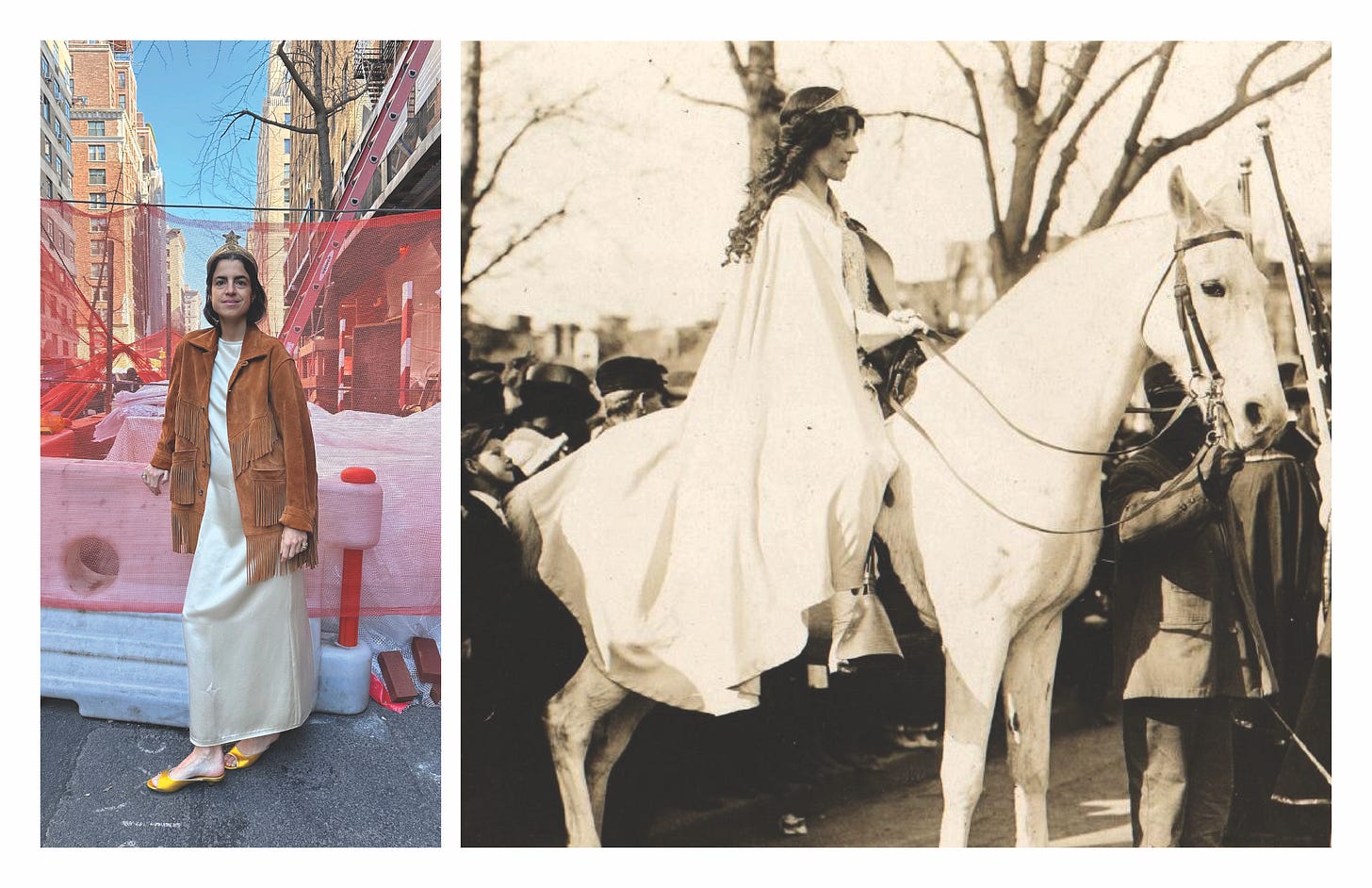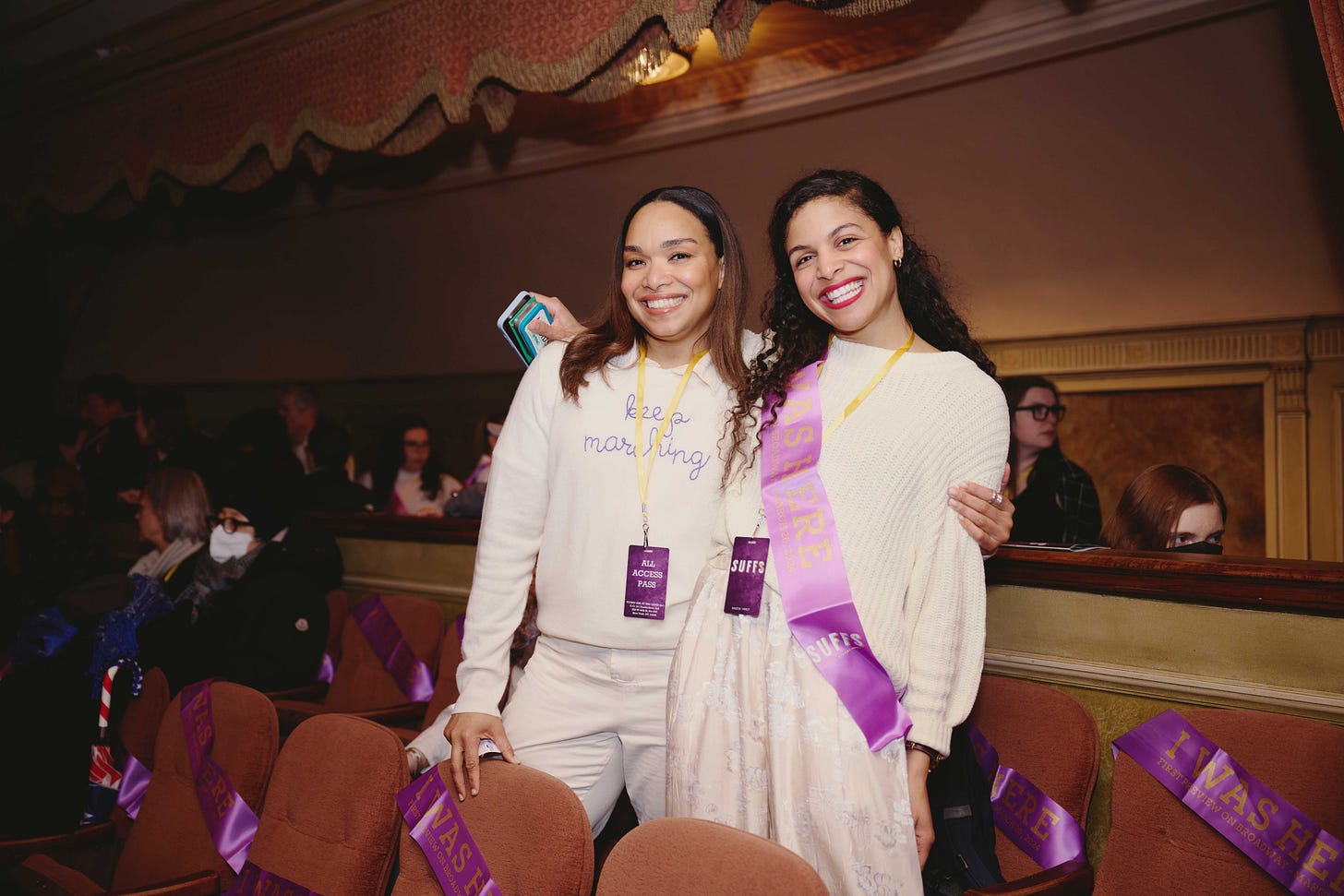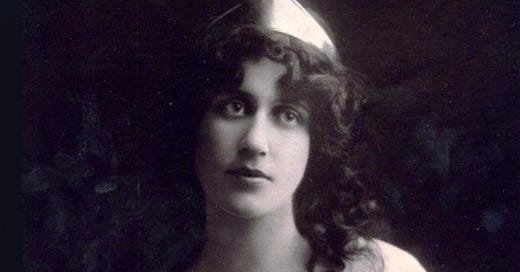Two weeks ago, in an issue about using street style photos as inspiration to get dressed, I posted a picture of Leandra Medine Cohen wearing a gold crown as a hair accessory. Just before I published the newsletter, I realized in a flash of excitement that the crown looked almost identical to the one Inez Milholland wore in the first American Women’s March on Washington in 1913. In that march, Milholland wore a white gown and a gold crown as she rode a white horse down Pennsylvania Avenue, leading hundreds of thousands of women in an organized protest for suffrage—the right to vote.

For the last three months, I have been living inside that suffragist movement, via the new musical I am working on as an associate choreographer, Suffs. (Shaina Taub, who this Thursday will become only the second woman in Broadway’s history to open a show in which she has written the book, music, and lyrics, and stars in the leading role, has been living in the movement for the last 10 years.) So, it makes sense that at some point I saved a photo of Leandra’s outfit, subconsciously registering the crown. That headpiece, made by Bode, retails for $530, and is, at the time of my writing this, completely sold out. In our show’s interpretation, the brilliant Hannah Cruz, who plays Inez, wears a bronze headpiece as well as chest plate—evocative of Greek myth, an Athena, a warrior queen riding down the mob.
It makes sense that the image of a woman riding down a city street on a white horse in her own personalized suit of armor would resonate, in the fashion world and beyond. There is the fantasy of it, the glamour, the confidence of it—but also the desire to suit up, to protect, to shield. Our autonomy as female-bodied people is under attack. Last week, Arizona’s highest court upheld an 1864 law that would ban abortion from the moment of conception, except when necessary to save the life of the mother, and makes no exceptions for rape or incest. [The court has put the ruling on hold, while a lower court hears arguments regarding whether the law is constitutional.] If the law is upheld, Arizona will be among the strictest of the nearly two dozen states that have banned or severely restricted access to abortion. Regardless of your personal views on abortion, I am of the belief that, if actually faced with the circumstances that might require one, most people would find having the government shove its way into an emotionally charged, deeply personal conversation between themselves and their doctor to be infantilizing and maddening. In some cases, they might find it life-threatening.
In our show, as Inez Milholland embarks on a nationwide campaign for women’s suffrage, different flags from different states fall to represent her journey across the country. When the flag from Arizona dropped two weeks ago, it garnered no reaction from the audience. This week, against the backdrop of Arizona Supreme Court’s contentious decision, the falling flag brought with it a little shockwave, and the reaction from the crowd was often vocal. As Inez races around the stage, her purple capelet—one of the many stunning pieces designed for the show by the great Paul Tazwell—streams out behind her, an early 20th century Wonder Woman.
In a patriarchal society, a woman likes fashion because she is silly. In popular media, a woman who loves clothes is often framed as unserious, frivolous. And it’s true that fashion can be frivolous (that’s part of the fun)—until it isn’t. A crown accessory is playful, but it’s also symbolic. In 1916, a capelet was fashionable, but Inez’s cape is no accident. [An actor friend of mine likes to say that “the costume does 80% of the work.”] In 2024, a woman in a cape might indeed sound silly, until an audience is watching that woman blaze across the country, urging voters to cease their support for a president who refuses to endorse women’s legal equality. We gain power from our clothes, from our symbols—and a woman with power by definition is a threat to the patriarchy.
Even before opening, news of our show—and its cast of extraordinary women and non-binary actors, plus our all-women creative team, led by women producers—has found its way onto far-right media outlets. How quick they are to forbid their daughters from seeing our show! How sad that the themes of our story, which begins in 1913, are still so current! Watching the media, we laughed, and then we got back to work. This was a battle we recognized—the required armor passed down to us by our mothers, our grandmothers. We donned our crowns.

Costume Change is a weekly newsletter about personal style. All opinions reflected above are my own. Thanks for reading!





